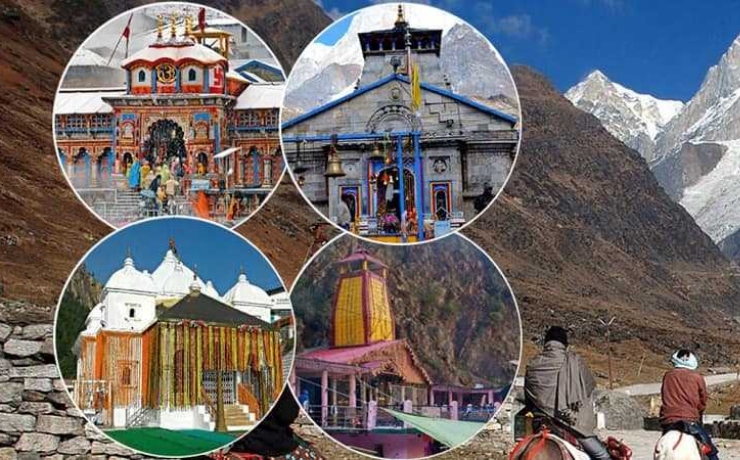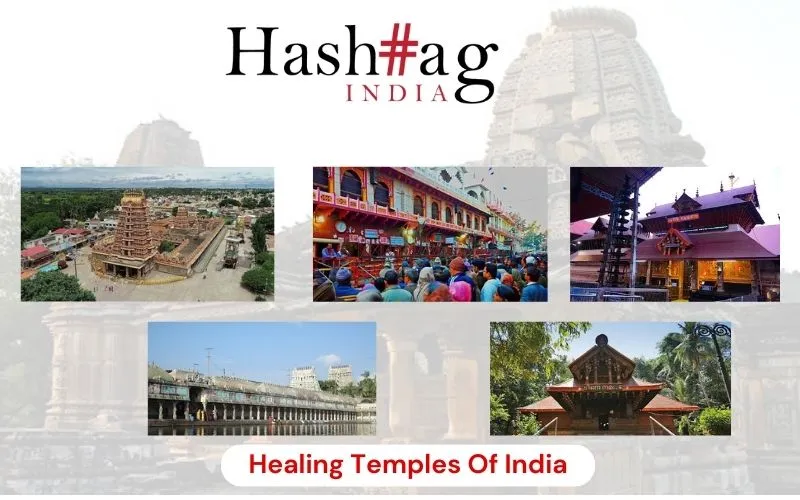Chardham Yatra is one of India’s most famous pilgrimage tours. Every year, thousands of devotees visit these holy shrines located in Uttarakhand. The Char Dham route consists of four sacred places: Yamunotri, Badrinath, Kedarnath, and Gangotri. All these shrines are surrounded by mountains and a thick layer of snow. This amazing journey opens the gates of salvation for devotees, and it is a wonderful experience that should not be missed. We explain the importance of visiting these holy shrines and the stories associated with them

1. Yamunotri
The journey begins at Haridwar first, and then the devotees visit Yamunotri temple. The temple is dedicated to the Goddess Yamuna and was built in the 19th century, located in the Garhwal hills at an altitude of 3,291metres above sea level. The actual source of the Yamuna River is located at a height of 4,421 meters but it is not easily accessible. The temple is located at the foot of the hill and pilgrims offer prayers at the temple itself.
There is a powerful rock pillar located near the Surya Kund where pilgrims offer prayers to the pillar before entering the main temple.

How to reach: The nearest railway stations to Yamunotri are Rishikesh and Dehradun.
Opening hours: 1st week of May-October from 6 AM-8 PM. The Aarti time is from 6:30 PM-7:30 PM.
2. Gangotri
Gangotri is the birthplace of the River Ganga, and it is located at a height of 3.200 meters. Thousands of people visits the holy temple every year. According to Hindu mythology, Goddess Ganga took the form of the river to cleanse the ashes and liberate the souls of humans.
Lord Shiva placed her in his locks and minimized the impact of her fall. The major highlight of the Gangotri Dham is Gomukh which is the origin point of the Holy river Ganges. Before visiting the temple, pilgrims dip in the holy river and purify themselves from their sins.

How to reach: The nearest railway station to Gangotri is Rishikesh. Taxis and buses are available from Rishikesh.
Opening hours: May-October from 6:30 AM-2 PM, 3 PM-9:30 PM.
3. Kedarnath
Shri Kedarnath Dham is one of the holiest pilgrimages for Hindus and it is also one of the twelve Jyotirlingas of Lord Shiva. The temple is known to be built by the Pandavas and it is restored by Adi Shankaracharya in the 8th century. Adi Shankaracharya’s samadhi is located remarkably close to Kedarnath. The Kedarnath temple is surrounded by breathtaking snow-clad mountains, and it is located at the head of River Mandakini in the Himalayas.

How to reach: To reach Kedarnath first you must know that Gaurikund is the last accessible road and from there it is a trek along the Himalayas.
Opening hours: May-October 6;30AM-3 PM, 5 PM-9:30 PM.
4. Badrinath
Badrinath is the place where Lord Vishnu set his foot on the earth for the very first time. The temple is located at the height of 3,133 meters from sea level, and the temple is on the left bank of the Alaknanda River.
In this temple, Lord Vishnu is worshipped as Badrinarayan, and the story goes back to the time of Adi Shankaracharya who discovered a black Saligram stone image of Lord Vishnu and he enshrined in Tapt Kund. In the 16th century, the Garhwal king moved the idol to the present-day temple.

How to reach: Badrinath is well connected by accessible roads and if you have experience driving in the mountains you can drive on your own or you can hire a cab from Jolly Grant Airport.
Opening hours: May-October 4:30 AM-1 PM, 4 PM-9 PM.
Why is it important to go for Chardham Yatra?
It is highly believed that whoever visits these holy shrines at least once in their lifetime will attain salvation. It is also believed that this journey is an exercise of willpower, and faith because the devotee has to travel to difficult locations, and once they reach the place the devotee feels a sense of satisfaction and leaves all their problems at the feet of the deity. It is truly a spiritual experience for those seeking god and the best time to take the Chardham Yatra is around July and September. Make sure to carry thick woollens for the cold temperatures because the temperature may fall to 1 degree centigrade at night.
Conclusion:
This is the significance and details of the Chardham Yatra. The journey may feel long, but it is rewarding. It is the perfect time to head for a Chardham Yatra and offer prayers to gods and goddesses.





























